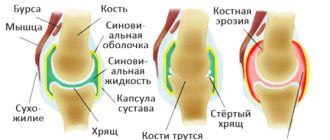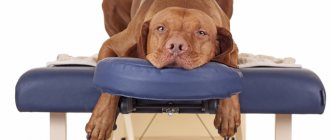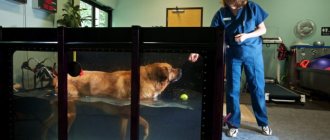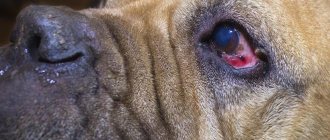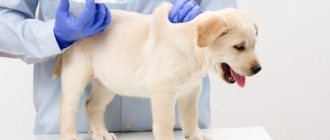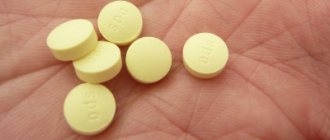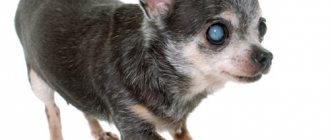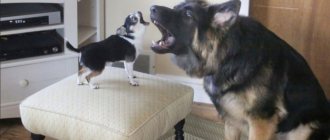05/18/2019 Drozd Nikolaevich Animals Massage procedures bring great health benefits. They help relieve pain, calm the nervous system and strengthen muscles and joints. This type of therapy is necessary not only for people. Dog massage is used in the treatment of injuries, diseases, and also for preventive purposes. These days, many veterinary clinics offer this service. However, every dog owner can master the massage technique on their own and perform the procedures on their pet at home.
Benefit
For the first time in their lives, dogs are introduced to massage in infancy. When a mother licks her newborn puppies, she helps them breathe. When the cubs grow up, the mother kneads their tummies. This manipulation prevents constipation.
Massage for dogs is also necessary in adulthood. This is a good means of treating and preventing diseases. The benefits of massage treatments are as follows:
- Massaging movements stimulate blood circulation. As a result, blood flows to a certain area of the body, tissue nutrition and local metabolism improves. This promotes faster healing of injuries, which is why massage is often prescribed for injuries.
- The procedure stimulates the motor nerves. Therefore, massage is necessary for paralysis and weakness of the paw muscles. This rehabilitation activity helps restore movement.
- Massage helps to relax and calm the nervous system. This procedure is useful for a dog after experiencing stress, difficult training or an exhibition.
- Massage procedures improve peristalsis and facilitate easy bowel movements.
In many cases, dog massage can be done on your own. However, if your pet is seriously ill, the procedure should be performed by a professional. Not all types of massage treatments can be done at home.
Is massage necessary for a dog with paralysis of the hind legs and how to do it? Find out the answer!
Throughout its life, a pet faces many health-related problems. One of the most serious is paralysis of the hind limbs.
This is a disruption in the functioning of the body that cannot be dealt with without timely and professional help. Often leads to disability of the dog. Paralysis can be treated, but with difficulty, so it requires a lot of care, love and work from the owner.
Indications
For what diseases is massage for dogs indicated? This procedure is effective for the following pathologies:
- diseases of the musculoskeletal system;
- injuries;
- constipation;
- inflammation and degeneration of joints;
- pain syndrome of various origins;
- neurotic disorders.
Healthy dogs should also get massages regularly. This will help your pet maintain a healthy musculoskeletal system into old age, as well as relieve stress and relax.
Diagnosis of the disease
To make a correct diagnosis, the veterinarian conducts a number of studies:
- Analysis of biochemical blood parameters.
- General analysis.
- Neurological tests: with a calm step, the doctor evaluates the position of the animal’s head, back, limbs, and the tone of its muscles;
- the ability to run, jump, climb up and down from elevated positions is assessed;
- reflexes are checked;
- the pain threshold is examined by pinching the skin between the phalanges of the fingers, while the dog must withdraw its paw and bite; if it only whines, this means that sensitivity is reduced.
We recommend reading: How long can a cat live without sleep?
In addition to tests and instrumental studies, the veterinarian will ask the owner in detail about the symptoms that the dog has, and by combining all the results obtained, he will be able to make the correct diagnosis.
Contraindications
There are times when massage is contraindicated. This procedure should not be done under the following conditions:
- fever;
- any damage and lesions of the skin (eczema, tumors, wounds, pustules);
- bleeding;
- fresh bone injuries with severe pain;
- epilepsy;
- severe liver and kidney diseases;
- shocked.
If your dog has at least one of the listed contraindications, then refuse massage. Otherwise, the treatment procedure will do more harm than good.
Causes of weak paws
- Damage to limbs.
Diseases of the hind legs can occur due to injuries: fractures, sprains, tendon ruptures, damage to peripheral nerves. Bites from other dogs can also be a cause; in a fight, bruises or falls, the dog can (slip on ice). - If the animal suffers from arthrosis, arthritis, tumor
, also with herniated intervertebral discs. A spinal pathology may develop in which there is a disruption of the innervation of the limbs when the spinal cord is exposed to negative factors. - Vertebral degenerative diseases
. These diseases begin due to improper functioning of the metabolic processes of spinal tissue. This can lead to pathologies of the constituent links of the spinal column. - Spondylosis in dogs.
Leg failure is associated with “local aging” of certain segments of the spine. Usually the disease itself has a slow rate of development. The first stage is invisible and almost impossible to detect. - Osteochondrosis.
Degenerative stages of intervertebral disc development occur.
The reasons for the development of this disease can be vertebral instability, which develops at the genetic level. Rheumatic disorders, previous back injuries, impaired disk nutrition due to microcirculation disorders, autoimmune phenomena.
Some tips
Before giving your dog a massage, check out the following advice from veterinarians:
- You will need a basic knowledge of canine anatomy and physiology. You can learn about the characteristics of the animal’s body from a veterinarian. You can also find this information yourself on dog breeding websites.
- During the procedure, turn your pet over to massage first one side and then the other. Try not to press on the stomach; this part of the body can only be lightly stroked. Otherwise, the abdominal organs may be damaged.
- If your pet is diagnosed with a serious illness, then it is better to entrust massage treatments to a specialist.
- If you give a preventative massage to a healthy dog, then the procedures should be regular. Try to spend at least 10 minutes on this every day. This will be a good prevention of the development of arthritis.
- If your pet is healthy, then pay attention to its reaction to the procedures. If the dog shows dissatisfaction (growls, flinches), then do not force it. You need to gradually accustom your animal to massage.
Technique
The procedure for massaging your dog’s hind legs can be done at a veterinary clinic or you can master the technique yourself. Choosing the latter option does not cancel the obligatory visit to the veterinarian, who will assess the pet’s condition and prescribe appropriate treatment, which may include massage, medications, or a combination thereof.
There will be much less stress for your pet if the necessary massage manipulations are carried out by a person you already know, taking care of him. However, to earn trust, all movements must be weak at first. Gradually you need to move on to more intense actions, since it is impossible to achieve a positive result with light stroking. The recommendations below will help you figure out how to do everything right and benefit your pet. But if there is not enough time, energy and desire for a high-quality procedure, it is better to entrust its implementation to specialists.
Procedure at the preparatory stage:
- Lay the dog on its side and stroke the body from head to tail with light movements of a wide open palm. For additional relaxation, you can complement your actions with gentle words. Over time, you can slightly increase the pressure on the body so that the movements resemble rubbing.
- Massage your back in the direction from the shoulders to the base of the tail, working each muscle. It is strictly forbidden to massage the spine and bone formations.
- Rub the sacral area with light circular movements of the open palm.
- Pat your belly. If the dog experiences noticeable discomfort during this manipulation, you can do without it.
- Give a head massage. To do this, place your palms on the sides of the skull, slowly moving them back and forth. For small pets, actions can be performed with your fingers.
- Walk your hands several times from the base to the tip of the tail, squeezing it lightly. It is forbidden to pull or put too much pressure on the tail: discomfort can provoke the pet to make sudden movements, which is fraught with additional injuries (for example, to the spine) and loss of trust on the part of the dog.
Provided you are completely relaxed at the first stage, you can directly begin to massage the hind legs. The manipulation technique will be as follows:
- Take the paw in your hands and stroke the entire surface from top to bottom and from bottom to top several times. To improve blood circulation, over time you can increase the intensity of movements in order to massage the limbs strongly enough, but without unpleasant sensations for the animal.
- Grasp the base and tip of the limb with both hands and do light movements 10-15 times, without sudden movements, flexion-extension, paying special attention to the pet’s reaction. If there is noticeable discomfort and painful reaction, the range of motion and number of repetitions should be reduced.
- Make circular rotations with your paw in the hip joint. Movements should be clockwise and counterclockwise, up to 5 times in each direction.
- Stretch all the muscles of the limb with three fingers (index, middle and thumb), spending at least 1-2 minutes on each area.
- Apply pressure 20-30 times on the pads of the dog’s toes, clasping the end of the paw with your hands.
- Massage the spaces between the fingers.
The final stage of the massage can be stroking movements throughout the body, which will especially help calm a restless pet.
For reference: aquamassage is sometimes used as an additional procedure, when the dog is placed in a container with warm bubbling water for 10-15 minutes. Hydromassage waves stimulate blood supply processes, tone skeletal muscles and help relax the animal.
We do a general massage
Veterinarians recommend general massage to prevent disease. The methodology for carrying it out is as follows:
- Cover a hard surface with a soft cloth. Place your pet on it and stroke it from head to back.
- Massage the back first with your fingers and then with your palms. Gently knead the skin, trying not to put pressure on the spinal column.
- Focus on the sacrum. Massaging this area prevents joint diseases.
- Rub your paws from top to bottom. Then bend and straighten each finger.
- Gently pat your pet's belly. At the same time, avoid sharp pressure.
- Now move on to massaging the muzzle. Take the cheeks with your fingers. Lift them up and then lower them down. Stroke the chin, as well as the area around the nose and eyes.
Complete the procedure by stroking the tail from base to tip.
Massaging the limbs
Massage of the hind legs of dogs is done for paralysis and weakness of the muscles of the limbs. This procedure is an important part of rehabilitation. It stimulates nerve endings and develops muscles. This helps restore normal limb mobility.
To achieve the desired effect, your dog's paws must be massaged regularly. Treatment should continue for at least 20 minutes a day. To achieve the result, about 20 procedures will be required. Then they take a break for 14 days and repeat the sessions.
How to massage your dog's paws? It is necessary to give preference to kneading and vibration effects. This helps stimulate and restore nerves and muscles.
Use the following massage technique:
- Pet the dog's entire body. Try not to lift your hands while doing this. Your pet should be completely relaxed and calm.
- Gently pat the paw. Move from the base to the heels. Then slowly bend and straighten the limb. Repeat this movement 5 times.
- Massage your paw in a circular motion. First move to the inner surface of the limb, and then to the outer. Repeat the massage movements three times.
- Rub your paw muscles well. Gradually increase the intensity of the impact, but do not overdo it. Gently massage your heels and spaces between your toes.
After massaging one paw, move on to the other. Using this technique, you can massage both the hind and forelimbs. If you repeat the sessions regularly, your paws will regain strength. Gradually, your pet will learn to walk again.
Massage treatments bring great health benefits. They help relieve pain, calm the nervous system and strengthen muscles and joints. This type of therapy is necessary not only for people. Dog massage is used in the treatment of injuries, diseases, and also for preventive purposes. These days, many veterinary clinics offer this service. However, every dog owner can master the massage technique on their own and perform the procedures on their pet at home.
Relieving pain
How to massage a dog if something hurts your pet? The procedure technique is as follows:
- Place the dog on a blanket or the floor, make petting movements and talk to the dog in a soft voice.
- Rub your shoulders, neck and back in circular motions, as if you were kneading dough. Do not put too much pressure on your body, as this may increase the pain.
- Gently stretch your paw muscles. Move from their base down. Don't forget to massage your fingers.
- Direct impact on the source of pain is prohibited. You can only stroke and knead the muscles around the sore spot. This will help improve blood circulation and reduce discomfort. Be especially careful if your dog suffers from cancer. Try not to touch the tumors, this may provoke their growth.
- Complete the procedure by lightly stroking the entire body from head to tail and each paw.
Massaging the limbs
Massage of the hind legs of dogs is done for paralysis and weakness of the muscles of the limbs. This procedure is an important part of rehabilitation. It stimulates nerve endings and develops muscles. This helps restore normal limb mobility.
To achieve the desired effect, your dog's paws must be massaged regularly. Treatment should continue for at least 20 minutes a day. To achieve the result, about 20 procedures will be required. Then they take a break for 14 days and repeat the sessions.
How to massage your dog's paws? It is necessary to give preference to kneading and vibration effects. This helps stimulate and restore nerves and muscles.
Use the following massage technique:
- Pet the dog's entire body. Try not to lift your hands while doing this. Your pet should be completely relaxed and calm.
- Gently pat the paw. Move from the base to the heels. Then slowly bend and straighten the limb. Repeat this movement 5 times.
- Massage your paw in a circular motion. First move to the inner surface of the limb, and then to the outer. Repeat the massage movements three times.
- Rub your paw muscles well. Gradually increase the intensity of the impact, but do not overdo it. Gently massage your heels and spaces between your toes.
After massaging one paw, move on to the other. Using this technique, you can massage both the hind and forelimbs. If you repeat the sessions regularly, your paws will regain strength. Gradually, your pet will learn to walk again.
Most older people know firsthand what arthritis is. This disease often appears in old age and, unfortunately, cannot be cured. We often hear from our grandparents how their arms and legs hurt, how at times their joints seem to simply be twisted. Most often, these are symptoms of an insidious disease - arthritis.
Our beloved pets also suffer from this disease, often at a respectable age. It manifests itself in the form of lameness, limited mobility and fatigue during walks. Just like in people, exacerbation of arthritis occurs in cold, damp weather, and the most dangerous times of the year are considered to be autumn, winter (the period of slush and rain with snow), and spring.
So what is arthritis? It turns out that arthritis is not one disease, but a whole group of joint diseases, which can be inflammatory, dystrophic, or have a mixed form.
If pathogens of a purulent infection, such as staphylococci or streptococci, penetrate into the joint cavity, this is called purulent synovitis, which can be open or closed. Treatment is carried out only in a veterinary clinic and consists of suppressing the infection and freeing the joint cavity from pus.
If the osteoarticular plates are affected, a diagnosis of purulent osteoarthritis is made. Purulent inflammation of the joint can occur as a result of penetrating injury to the joint, and in some cases with inflammation spreading from the tissues located next to it. The disease is accompanied by an increase in body temperature, the appearance of swelling, and the dog practically cannot stand on the affected limb. Treatment consists of surgery and the animal must be monitored in a veterinary clinic for some time.
In case of acute inflammation of the joint, with arthrosis, as a result of injuries or constant overload of the joints, deformation in the form of bone growths can occur, which ultimately actually disfigures the joint. This disease is called chronic deforming arthritis in dogs. It does not develop all at once, but gradually: at first the animal may limp after stress on the joints, then stiffness of the joint appears, which indicates deformation has occurred. Most often, this disease affects the hip or knee joints.
When hypothermia occurs, especially during hunting, when dogs are in a long pursuit of game, with swims in cold water, while the joints are practically overheated and are under intense physical activity, a disease such as rheumatic arthritis can develop. It belongs to infectious-allergic diseases, most often it occurs acutely with a sharp increase in temperature and severe pain upon palpation at the site of the diseased joint. Repeated attacks lead to rheumatism becoming a chronic disease.
If a dog owner has the slightest suspicion that his pet may have arthritis, he should consult a veterinarian for advice. Treatment is prescribed after a series of tests have been performed and an appropriate diagnosis has been made.
The first rule is to completely exclude your pet from lying on a cold floor (balcony, tiles) or in drafts! If the dog is not accustomed to a certain place where you can lay a bedding or rug, you should take care of the presence of carpets and paths in the apartment. When walking in rainy, damp weather, it is advisable to wear insulated overalls for dogs or ordinary overalls, which will protect against moisture penetration into the undercoat.
The second rule is that physical activity should be minimal, jumping and running should be excluded, walking time should be limited, and most importantly, rest.
The third rule is unquestioning adherence to the veterinarian’s recommendations and taking prescribed veterinary medications.
The fourth rule is the transition to special medicated dog food. For example, Hill's Prescription Diet Canine j/d treatment for arthritis. This food helps reduce pain in the joints, slows down the progression of arthritis, and reduces the degradation of articular cartilage.
The fifth rule is to regularly, in the morning and evening, especially during periods of exacerbation, do a light massage (on the recommendation of a veterinarian, it is possible to use ointments based on snake or bee venom, followed by wrapping the paw in a warm scarf), and also warm the paws after a walk and before bedtime. How to properly massage a dog with arthritis will be discussed below. As for warming up, you can use one of the following methods:
1) put a towel or an old sheet on the mat and an electric heating pad between them, make sure that the dog lies on the warm bed with the sore limb;
It is impossible to cure arthritis; massage can only help reduce muscle tension and pain that occurs with this disease. In addition, with a correctly performed procedure and regular massage, degenerative processes slow down. The lower spine, hip joint, and knee and hock joints are the main sites of injury, with problems with the shoulder or elbow joints being less common.
The massage is carried out early in the morning in order to prepare the muscles for the animal's daytime wakefulness, and also in the evening to relieve pain and tension that have accumulated during the day.
The massage procedure for dogs consists of kneading the outside of the elbow joint and pelvic limb. The most important thing is that the massage does not cause discomfort or pain to the dog. For arthritis, a light massage is recommended.
1. The massage begins with stroking, very light, without leaving the animal’s body with fingers or palms, usually the movement is made along the muscles in the direction of hair growth.
2. Kneading - pressing, squeezing muscles and another useful action - rolling the skin. Kneading is done with the thumbs, and then with slightly clenched hands into a fist.
3. The next stage of the massage is vibrating movements, which are performed by pressing your fingers on the massaged area; this should be light pressure, which increases slightly in the process. When pressing with your hands, a movement similar to shaking hands is performed.
4. With the help of three fingers - index, thumb and middle - a massage moment such as rubbing is carried out.
5. The last stage of the massage is touch, which consists of placing your palm on the massage site and feeling the heat wave that will emanate from the pet’s body, along with which pain and tension will recede.
Massage of a dog's hind legs is used in veterinary practice as one of the means of treatment and rehabilitation for problems with limbs, which can be used by both a professional and the owner of the animal. Knowledge of techniques, basic massage techniques and timely procedures help improve the pet’s well-being, complement the main treatment, and in some cases completely overcome the disease.
Helping the dog relax
A relaxing massage for dogs is essential to calm the nervous system and relieve stress. This procedure is useful to do when your pet is frightened by something or after a hard day. In this case, the main attention should be paid to the area of the head, ears and back.
Follow the following sequence:
- Pet your pet's entire body. At the same time, try to speak kindly to the dog. Pat the dog by the scruff of the neck. This will help the animal calm down and relax.
- Start the massage from the neck. Massage the area in a downward circular motion. Do not press too hard, remember that there are many blood vessels in this area. Massage the ears and the area around them, but very gently.
- Then move to the shoulder girdle. Make the same circular movements. Gradually move towards the tail.
This completes the procedure. Finally, you can stretch the ponytail a little or turn it three times in different directions. But watch your pet's reaction. Some dogs find such manipulations relaxing, but not all dogs like having their tail touched.
How to do?
The dog's recovery will depend on its owner. The sooner the owner notices problems, the higher the animal’s chance for a normal life.
First of all, you need to show your pet to a veterinarian, who will assess the severity of the disease and prescribe adequate treatment. These could be medications with complex measures, or maybe just one massage will be enough.
The massage consists of two stages:
- Preparatory, relaxing.
- Hind limb massage.
Symptoms of the disease
Clinical manifestations may vary. The rate of development of pathology also differs significantly. In some cases, the disease progresses quickly (injuries), leading to disability of the animal within a few minutes, in others it lasts for years (tumors, discopathy, etc.) The following main symptoms can be identified:
- loss of ability to move independently. The dog can walk while leaning on walls or other interior objects. In isolated forms, one or more limbs may drag after the dog along the floor or ground;
- unsteadiness of gait. The animal moves uncertainly, staggering;
- frequent stumbling. Weakened or absent muscle strength leads to decreased range of motion. The pet touches any small obstacles - stones, carpets, thresholds. An additional danger is introduced by the possibility of injury and infection (in denervated areas the immune system does not function adequately, creating a favorable environment for the proliferation of microorganisms);
- asymmetry of the body and limbs. Paralysis or paresis leads to the impossibility of movement, decreased muscle tone, which disrupts the functional and aesthetic anatomy of the animal.
Recommended reading: Cat smells strongly of fish
Unsteady gait as a sign of paralysis
When the pain syndrome is severe, the animal is restless and rushes around the room, even if this is not completely successful. In rare cases, if the lesion is in the brain, the disease is combined with attacks of convulsive seizures. They can be limited (one limb twitches) or generalized (convulsions cover the entire body). Systemic convulsions are a dangerous phenomenon, since during them the animal’s breathing stops due to spasm of the circulatory fibers of the larynx.
